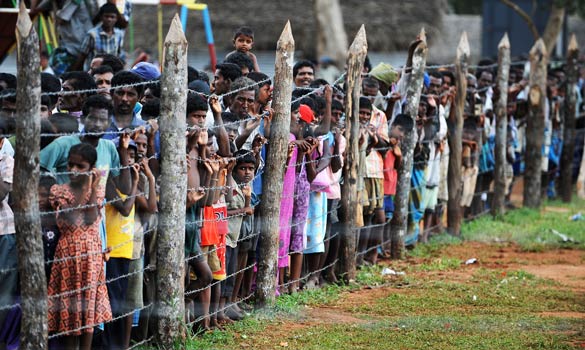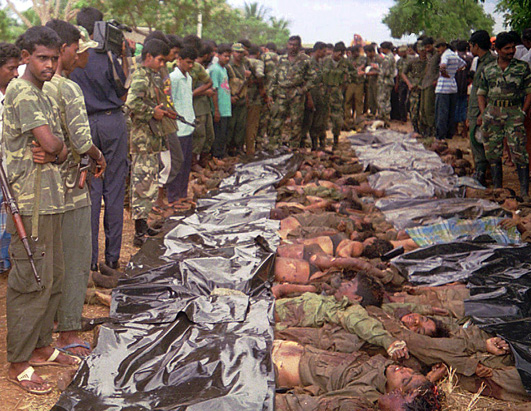
The Sentinel Project has finalized an assessment on the risk of mass atrocities in Sri Lanka. Almost five years after the end of the civil war, the assessment reflects that the mass atrocity risk in Sri Lanka remains high and addresses some of the underlying sources that represent a threat to human security.
Despite the international pressure to appoint a Lessons Learnt and Reconciliation Commission (LLRC) in 2010, the government of Sri Lanka has failed to address the old grievances between the government and the Liberation Tigers of Tamil Eelam ( LTTE), which led to a 25-year civil war.
The risk of escalating violence reached a critical threshold during the period of January through May 2009, when the government of Sri Lanka intensified efforts to militarily eliminate the LTTE who had been fighting for an independent Tamil homeland since 1983. As hostilities escalated in the conflict zone, civilians trapped between the LTTE and the Sri Lankan government’s armed forces became victims of mass atrocities.

Sri Lankan civilians suffered great hardships and many were displaced during the 25-year civil war

During the civil war, the displacement of 470,000 people from the Northern provinces has also increased resentment by ethnic Tamils against the Sri Lankan government and military. This resentment could manifest itself in increased anti-government protest, which can lead to violent clashes between the two ethnic groups and extreme measures to subdue further challenges to government authority.
The current political situation gives the military an ever-greater concentration of power. The heavy militarization of the north remains one of the main obstacles to the region’s recovery since the Sri Lankan military has assumed an economic role in not only overseeing but also approving development efforts. The military’s freedom of action represents a potent example of socioeconomic deprivation of a specific group based on the treatment of Tamils as second-class citizens by the Sri Lankan government.
Furthermore, the defeat of the LTTE in 2009 has done little to address the concerns and fears of the Tamils as they relate to Sinhalese domination. Instead of forming more inclusive relationships with the minority, the Sinhalese government has used this transitional period to reassert Sinhalese power. Additionally, police and military forces, as well as Sinhalese militias, continue to resort violence, including intimidation, disappearances, arbitrary arrests, torture, and even murder to restrain any opposition to the government.
The increasing consolidation of power by President Mahinda Rajapaksa and his family has further eroded the remaining semblance of democracy in Sri Lanka by gradually eliminating any persons or systems of accountability. In addition, the government has refused to investigate war crimes and other atrocities committed by its military forces during the last phase of the civil war.
Taking into account the recent history of the conflict, the current risk assessment gives an account on the main sociocultural and political factors that constitute a threat to peace and mass human rights abuses in Sri Lanka.
